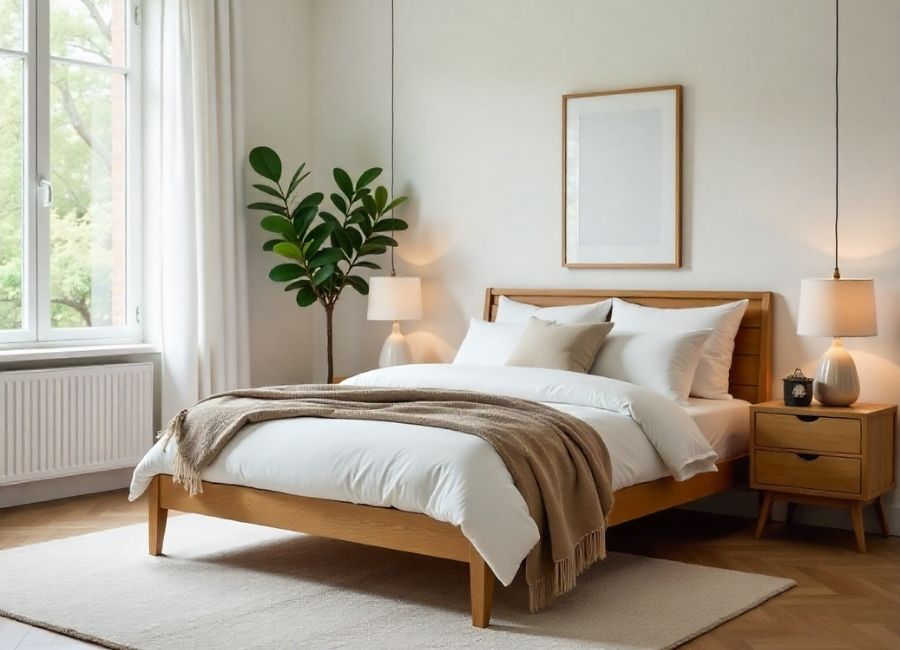Creating a cohesive bedroom design while mixing different wood tones can feel overwhelming. Many homeowners stick to matching bedroom sets out of fear that combining various wood finishes will create a chaotic look. However, when done thoughtfully, mixing wood furniture adds visual interest, personality, and sophisticated depth to your space. The key lies in understanding which wood tones work harmoniously together and following proven design principles. Whether you’re working with inherited pieces, budget finds, or simply want to break away from cookie-cutter bedroom sets, mastering the art of wood mixing will transform your bedroom into a curated, designer-worthy retreat. This guide will walk you through practical strategies for combining different wood finishes, from selecting complementary tones to balancing proportions throughout your space.
Understanding Wood Undertones
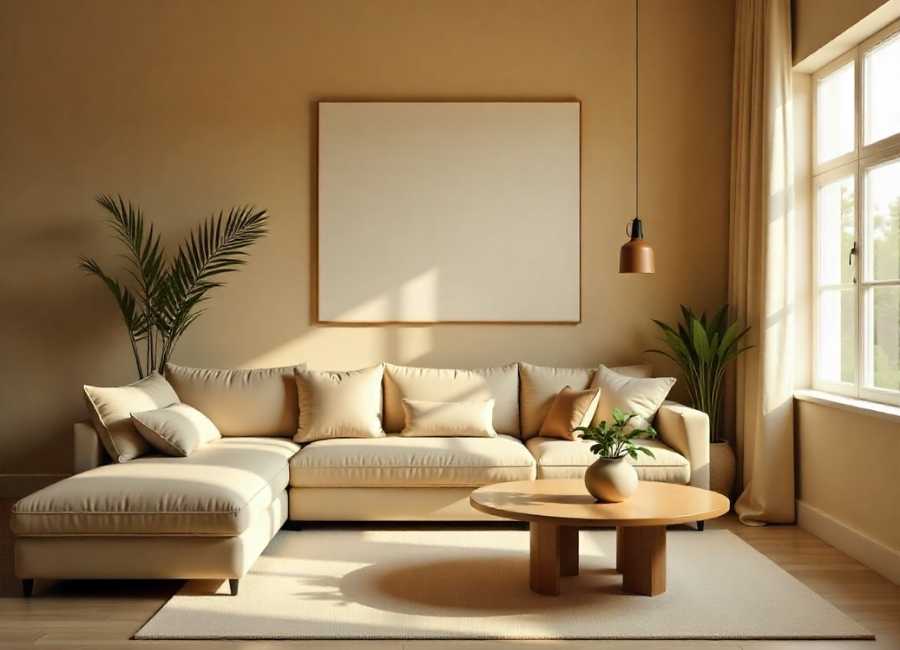
Before mixing wood furniture, you need to identify the undertones in each piece. Wood undertones fall into three main categories that determine compatibility. Warm undertones are evident in woods such as cherry, mahogany, and traditional oak. These pieces exhibit hints of red, orange, or yellow when examined closely for the grain. Warm-toned woods create cozy, inviting atmospheres and pair beautifully with earth-tone color palettes. Cool undertones are found in woods like ash, maple, and some modern oak finishes. These pieces have subtle hints of gray, blue, or green. Cool-toned woods offer a more contemporary feel and work well with neutral and monochromatic color schemes. Neutral undertones are present in woods such as walnut and certain pine varieties. These versatile pieces can bridge the gap between warm and cool tones, making them excellent anchor pieces when mixing different wood finishes.
The 60-30-10 Rule for Wood Mixing
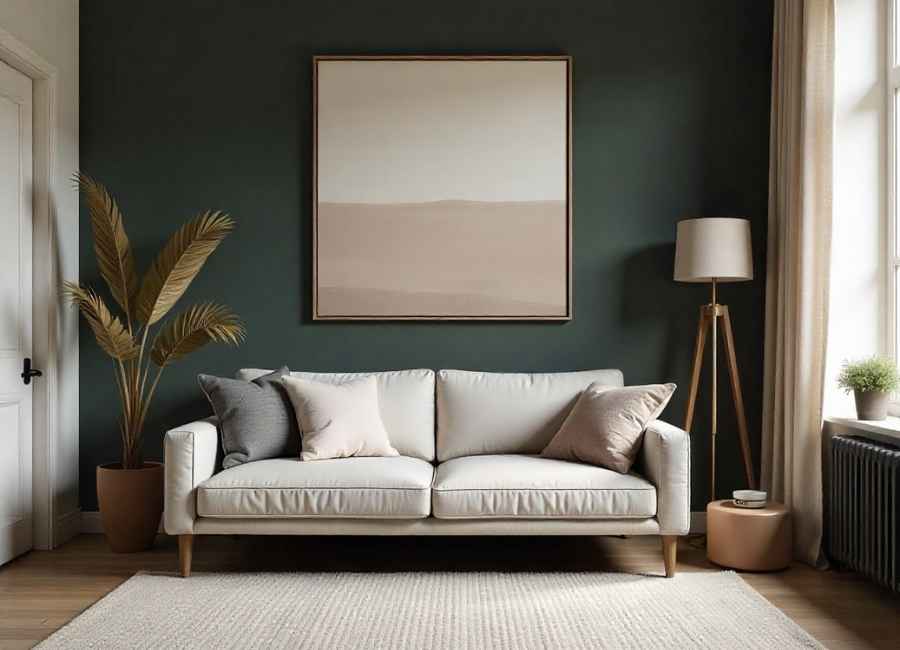
Professional designers often apply the 60-30-10 rule when mixing wood tones in bedrooms. (Clemson & Sophie, n.d.) This principle ensures visual balance while preventing any single wood finish from overwhelming the space. Dedicate 60% of your wood furniture to one dominant tone. This might be your bed frame, dresser, and nightstands in a rich walnut finish. The dominant tone establishes the room’s overall wood personality and creates a cohesive foundation. Use 30% for your secondary wood tone. This could include accent pieces such as a reading chair, mirror frame, or decorative shelving in a lighter oak finish. The secondary tone adds visual interest without competing with your dominant choice. Reserve 10% for accent wood tones. Small items, such as picture frames, decorative boxes, or a single statement piece in a contrasting finish, fall into this category. These accents provide the finishing touches that make your design feel intentional and complete.
Pairing Light and Dark Woods
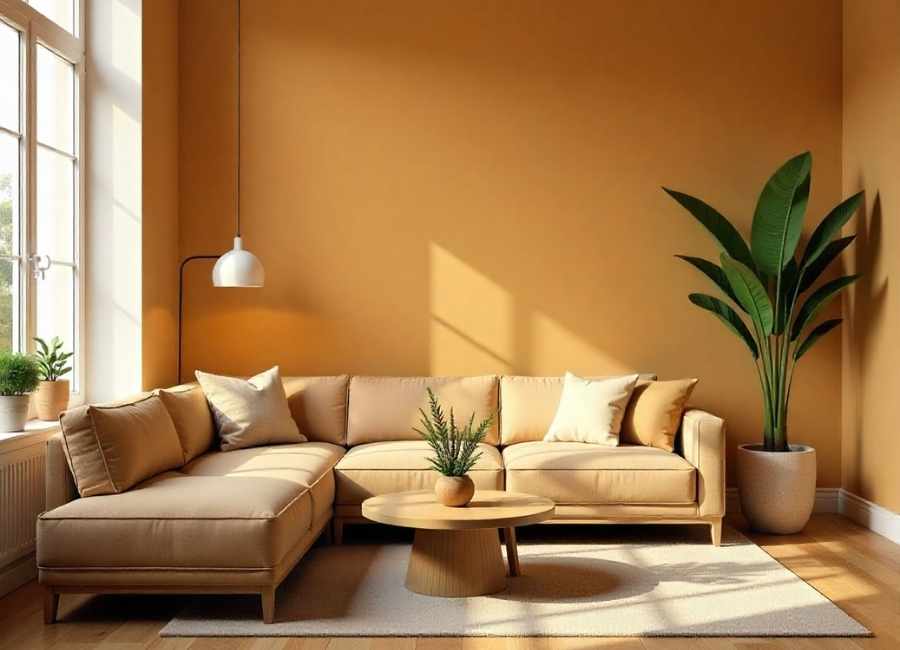
Combining light and dark wood tones creates dramatic contrast and visual depth in bedroom spaces. This approach works particularly well in rooms with ample natural light, where the contrast between finishes becomes a design feature rather than a distraction. Start with darker woods as your anchor pieces. A deep espresso bed frame or rich cherry dresser provides a strong foundation that won’t be overshadowed by lighter accent pieces. Dark woods also hide wear and scratches better than light finishes, making them practical choices for high-use furniture. (Materials, n.d.) Introduce lighter woods through secondary pieces, such as nightstands, mirrors, or accent chairs. Light woods, such as blonde oak, ash, or pine, add brightness and prevent dark, heavy rooms from feeling closed in. The contrast creates visual movement that keeps the eye engaged throughout the space. Balance the proportions carefully. If your bed frame is very dark, consider lighter nightstands to prevent the sleeping area from feeling too heavy. Conversely, if you choose a light wood bed, darker accent pieces can ground the space and add sophistication.
Creating Harmony with Similar Tones
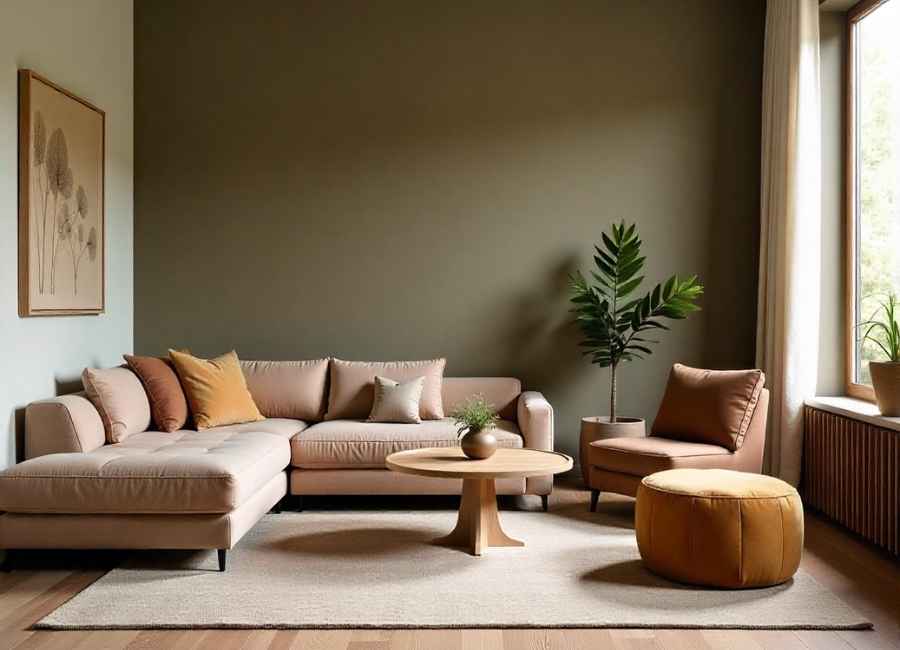
For a more subtle approach to wood mixing, combine woods within the same tone family but with different grains or finishes. This technique creates layers of visual interest while maintaining overall cohesion. Within warm wood families, pair cherry with mahogany or traditional oak with pine. (What Wood Goes With Cherry: Perfect Pairings Revealed, n.d.) These combinations offer variation in grain patterns and color depth while staying within the same undertone family. The result feels collected over time rather than deliberately mismatched. Cool wood combinations might include ash with modern gray oak or maple with bamboo. (How to mix & match woods, n.d.) These pairings maintain the clean, contemporary feel of cool undertones while adding textural variety through different grain patterns. Vary the finishes within your chosen tone family. Combine matte and glossy finishes, or pair smooth surfaces with more rustic, textured pieces. This approach adds visual depth without introducing potentially clashing undertones.
Strategic Placement and Visual Balance
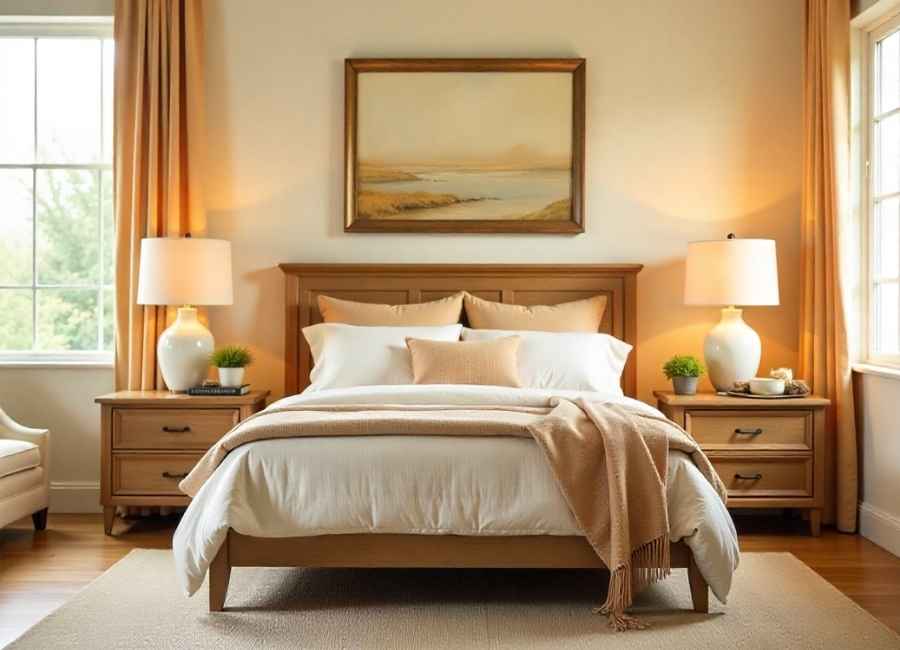
Where you place different wood tones affects how successfully they work together. Strategic positioning can make challenging combinations feel intentional and harmonious.
Distribute wood tones throughout the room rather than clustering them in one area. If your dresser is made of dark walnut, consider placing a light oak mirror above it rather than grouping it with other dark pieces. This distribution creates visual flow and prevents any area from feeling too heavy or light.
Use symmetry to your advantage. Matching nightstands in one wood tone flanking a bed in a different finish creates intentional contrast. The symmetry signals that the difference is deliberate rather than accidental.
Consider the room’s natural focal points. Your bed is typically the room’s main attraction, so choose its wood tone carefully. Other pieces should complement rather than compete with this central element.
Adding Non-Wood Elements
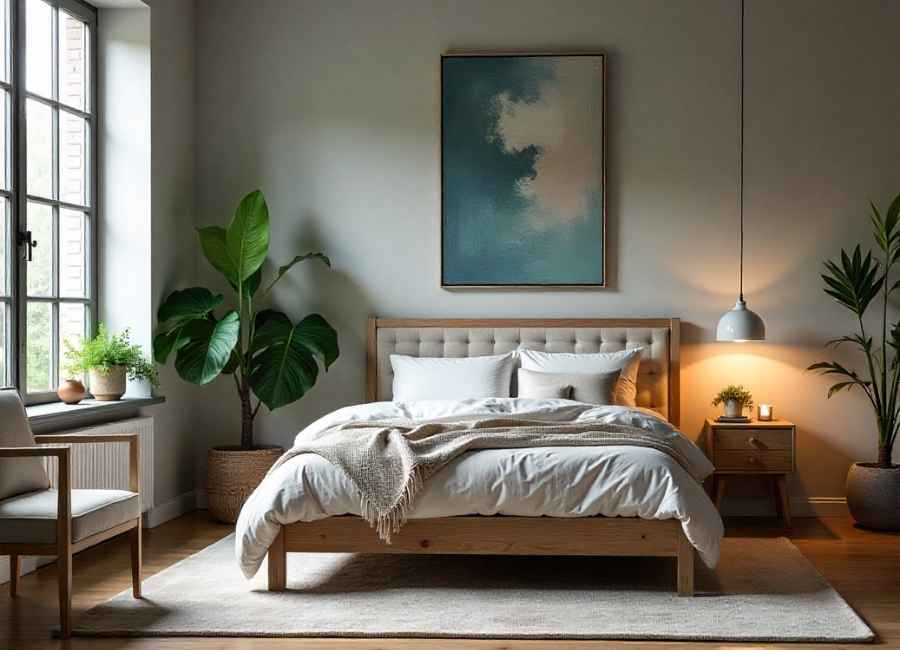
Successfully mixing wood furniture often requires incorporating other materials into the wooden surfaces. These elements provide visual rest points and prevent the mixing of wood from becoming overwhelming.
Introduce metal accents through hardware, lighting, or decorative objects. Brass, black iron, or brushed nickel can complement various wood tones while adding contemporary touches. Metal elements also help unify different wood pieces by creating a common accent thread.
Incorporate textiles strategically. A plush area rug, upholstered bench, or fabric headboard breaks up wooden surfaces while adding color and texture. Textiles can also help tie together different wood tones by repeating colors found in the various finishes.
Add plants or natural elements. Greenery provides a fresh contrast to wooden furniture while maintaining the natural theme. Stone, ceramic, or glass accessories offer a variety of textures that prevent the space from feeling too uniform.
Common Mistakes to Avoid
Several pitfalls can derail your wood-mixing efforts. Recognizing these mistakes helps you create successful combinations from the start.
Mixing too many different wood tones creates visual chaos rather than curated sophistication. (Mixing Wood Tones in Interior Design: 5 Tips, n.d.) Stick to two or three wood finishes maximum. More varieties make the space feel scattered and unintentional.
Ignoring undertones can lead to clashing combinations that feel uncomfortable, even when you can’t identify why. Always assess whether your wood pieces have warm, cool, or neutral undertones before combining them.
Forgetting about proportion can make one wood tone dominate inappropriately. A tiny light wood accent table won’t balance a room full of dark furniture. Ensure your wood distribution feels proportionate to the scale of your space and furniture.
Testing Your Combinations
Before committing to major furniture purchases, test your wood combinations using samples or smaller pieces. Many furniture stores provide wood samples that you can take home and evaluate in your actual lighting conditions.
Take photos of potential combinations. Sometimes color combinations that work in person don’t translate well in photographs, which can indicate they might not work as well as you think. Photos also help you evaluate the overall balance more objectively.
Live with temporary arrangements before making permanent decisions. Borrow pieces from other rooms or use temporary styling elements to test how different wood combinations feel over time. What seems exciting initially might become tiresome with daily exposure.
Making Wood Mixing Work for Your Style
Different design styles accommodate wood mixing in various ways. Understanding how your preferred aesthetic handles mixed woods helps you make appropriate choices.
Traditional styles often embrace rich, warm wood combinations. Cherry and mahogany pairings feel at home in classic bedrooms, while oak and pine combinations work well in country or farmhouse settings.
Modern and contemporary styles typically favor cool-toned wood combinations or strategic mixing of very different tones for dramatic contrast. (Wood Tones that Go Together: Mix Like a Pro, 2025) Clean lines and minimal hardware help disparate woods feel cohesive in modern spaces.
Transitional styles offer the most flexibility for wood mixing, as they blend traditional warmth with contemporary simplicity. This style accommodates both subtle tone variations and bolder contrasts, allowing you to choose your personal preference.
Your Path to Perfect Wood Harmony
Mixing wood furniture in your bedroom doesn’t have to be intimidating. Start by understanding the undertones of your existing pieces, then gradually introduce complementary woods using the 60-30-10 rule. Remember that successful wood mixing is about creating intentional contrast and balance rather than perfect matching.
Focus on one new wood piece at a time, evaluating how each addition affects the overall harmony of your room. With patience and attention to proportion, undertones, and strategic placement, you’ll create a sophisticated bedroom that feels both curated and personal—far more interesting than any matching furniture set could ever be.







